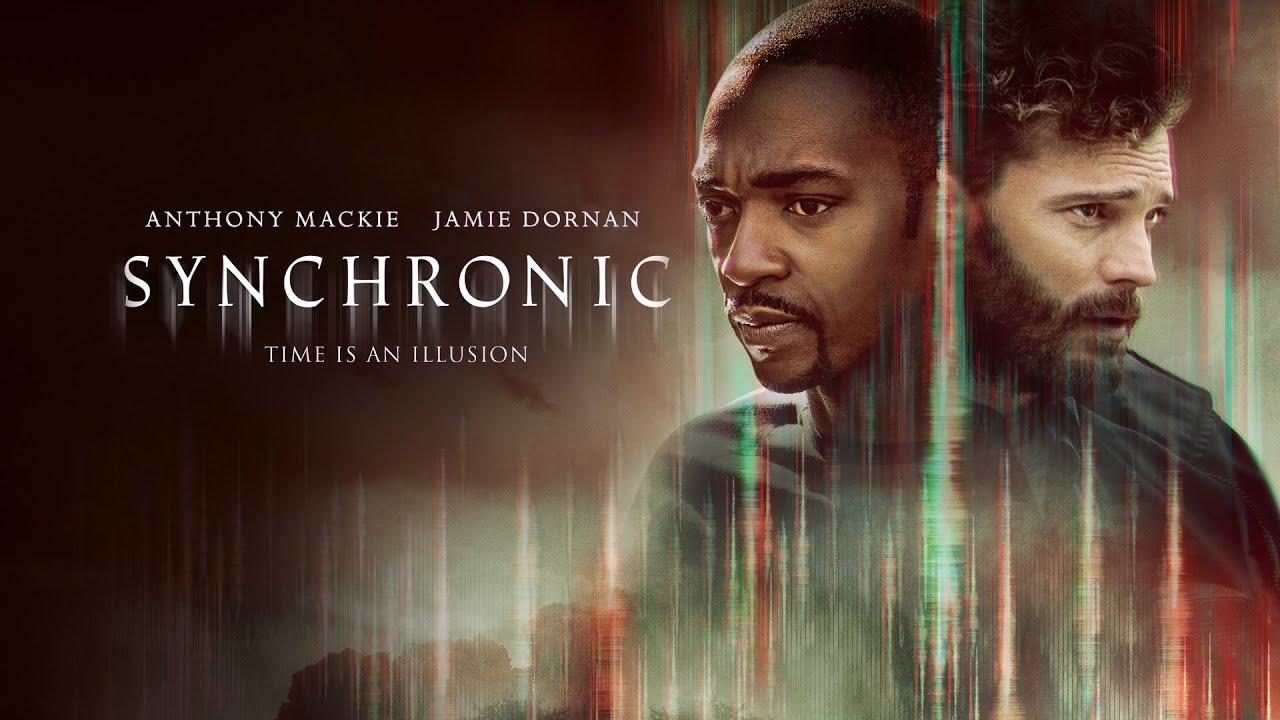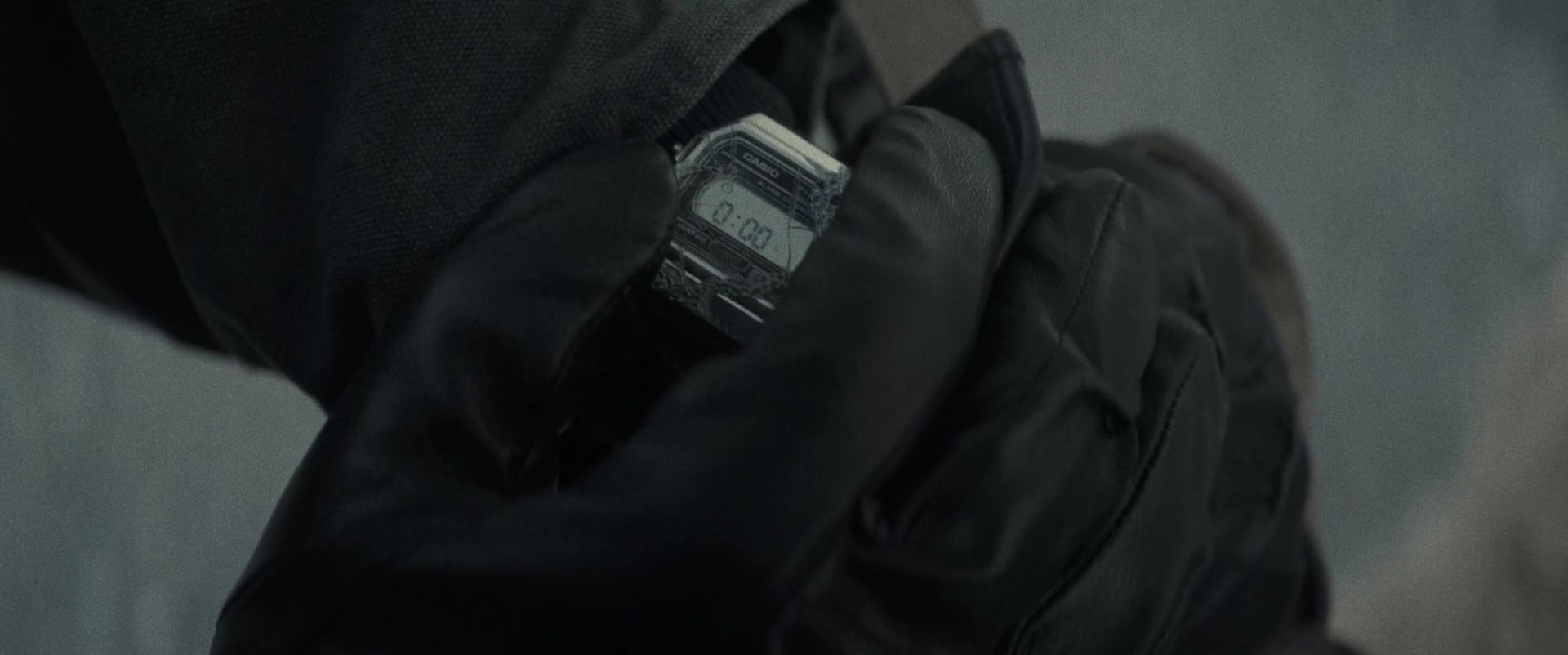Synchronic has its world debut at the 2019 Toronto International Flim Festival. The movie hit the screens on October 23, 2020, by Well Go USA Entertainment. Aaron says that their movies are more attractive among the best compliments rewards to Justin Benson, Aaron Moorhead’s filmmaking company when you know nothing about them. Leading with that statement suggests the question of why anyone would understand this review. Maybe you shouldn’t. Maybe you should see their latest feature, “Synchronic.” This tale of enhanced perception, physics, time, success, and fate is far from perfect. It takes a bit too long to set up its proposition. It doesn’t delve as strongly into the psyches of its two appealing lead appearances (a couple of New Orleans paramedics performed by Jamie Dornan. Anthony Mackie reviewing a string of frightening drug-related deaths) as it keeps promising to. And its climactic act of courage doesn’t quite feel as grand as it should because the important character’s backstory has been revealed to us without letting us feel it, from the center out.
Vague
However, it’s still far more enjoyable than most of the films and TV series that call themselves science novels. It places thought into the science of its assumption and explains how things work via the precise method (literally; Mackie’s former science student-turned-paramedic does the corresponding thing over and over again on determination; With minor modifications, taking notes as he goes). It never resorts to having numbers explain how stuff works to visualize the method by performing actions. And while it offers some gripping and darkly stunning images. It’s eventually more about ideas than representation. Explaining (like every previous film by this team) that you don’t need tons of cash to create an appealing work of science fiction and fiction. I’m vague here because I appreciated having no idea where “Synchronic” was going. What prompted the two main qualities, whether it would turn out to be an animation film. A horror film, or some metaphysical mystery (it’s a bit of all three). Even what the title suggested (turns out it’s an indication to both drug language and an aspect of one theory of time). Those who would rather encounter the movie cold should bend out at the end of this article and return later. Benson and Moorhead’s prior films (including “The Endless” and “Spring”) earned a good rating by the people who supported two types of genre movies. It tends to draw very various audiences: the kind where you can assume everything that’s following. Leaving no mystery unsolved by the end. The kind that transmits a certain amount of negative conceptual reservation that you have to fill in on your own.
Self Negating
“Synchronic” is a different tightrope walk. After achieving the title substance’s characteristics—a mind-altering originator drug in pill form. Sold in single-dose containers that look like condoms from a distance. It lets Mackie’s astringent, intelligent, self-negating main personality, Steve, estimate out what it does. By the two-thirds impression in the story, we have an immeasurable idea of the gist: take a tablet, a la Lewis Carroll’s Alice, and you can enter a various period while remaining in more or less the same geographic space, then stay there for seven minutes. However, once the method is declared authenticated, the film concentrates on the concrete experience of taking the drug and how it alters Steve’s understanding of time and continuation and makes him feel new things. And that’s where the lyricism and strangeness come in, calling in arresting shots (by Moorhead, the film’s cinematographer) of starry night heavens and galactic views, and in unexplained flash-cuts that signal changes in Steve’s information (including “Bringing Out The Dead technique, upside-down cityscapes, lyrical slow-motion, and a “Tenet”-like the picture of an ambulance driving in reverse). A scene where the drug’s author uses a vinyl release album to explain time as a sequence of concentric, parallel courses rather than one long, straight line should be dispensed in poetry and science classes. It’s just a lovely, hopeful picture in a movie differently a slave of fear and dread. Apart from preparing us for the exercises that Steve is about to begin working on. Evoking Kurt Vonnegut’s famous “Slaughterhouse-Five” (which Benson and Moorhead are uniquely carved to adapt), “Synchronic” transforms into the tale of a man who wants to fly free and unstuck in time, partly because he requires to locate Dennis’ daughter (Ally Ioannides’ Brianna).
No Cliche
He ingested the drug during a party and disappeared. But mainly because his painful past, tied to Hurricane Katrina, converted him into an emotionally drug-abusing, closed-off, hard-drinking womanizer. As Mackie played, who’s hardboiled outdoors overdoing it, Steve’s response is reminiscent of all those war veterans who converted detectives or gangsters in postwar crime story and film noir. However, to its acknowledgment, the script doesn’t place on that cliche. Instead, it implies that Steve’s existence as a Black former United south specifically; Living in America. And a person who dislikes his partner’s married-with-kids domesticity seems like he’s recording time on earth. “Synchronic” keeps running right up to the point of being scathingly political and anti-racist, only to stop short. However, the present-tense recommendations to Steve being unpopular in certain city neighborhoods and the numerous bigoted whites in the time-travel set-pieces. Including hooded Klansmen and a Federal infantryman who thinks Steve is his bondsman—verify that we’re not explaining too much into this aspect.
Hunting Down The Evil
“Synchronic” is more content traversing a center sort of isolation, connects us to thinking as though life is never going to get any more real after a life-altering secluded trauma,” say the critics. (Steve’s problem, attending back to Katrina) That the best has previously appeared. It’s all downhill from here (Dennis’s eventual viewpoint, after losing his daughter and his marriage crumbles). There’s also a lyrical enchantment with the knowledge of (and description of) what it feels like to move within time linearly. How that gets magnified by the grief of missing a loved one; An occasion, a space of one’s life, or a sense of attachment to a city or country. Are the dead-and-gone lost, taken away, disintegrated, disappeared? Or have they rebounded to a separate track on the recording album? Can we obtain them? Will they be able to understand us? Can we observe them even when they aren’t there?
Intelligent Point: Check
Steve and Dennis’s long discussion about mortality. Life is the film’s intelligent and emotional high point and a great debate against capitulating to morbid obsession. Statistically talking, you know how you’re operating to die (in a bed after a period of substantial decline. Like 98% of people); However, not how your life is going to release from one second to the next. This, in turn, means that life—especially whatever moment you appear to be in. This is where you ought to direct your consciousness. Because it’s so much more interesting; No one has the option to assume rather than trying to visualize the end.
Steve’s comprehensive quotation of Albert Einstein (who unpacked ideas of the relationship without. Which this movie would not exist) is the opening scene in “Synchronic.” Which performs the persona seem like something more than a submissive audience surrogate. Einstein’s letter to his friend’s withstanding family; And sometimes work associate Michele Besso characterized Besso as having “introduced me a little in parting from this unfamiliar world.” The unhappy, resigned appearance on Mackie’s face as he recites this determination. Others from representation give the character a bitter edge. Intelligent gravity that deepens as the rest of the tale unfolds. He is a man who has elevated the veil that shrouds all others’ vision and glimpses the expanse of the cosmos.
Rating
Synchronic sets off on an entertaining yet characteristic journey for the fans of Aaron Moorhead and Justin Benson’s previous work. We give this a rating of 3.6 out of 5.


